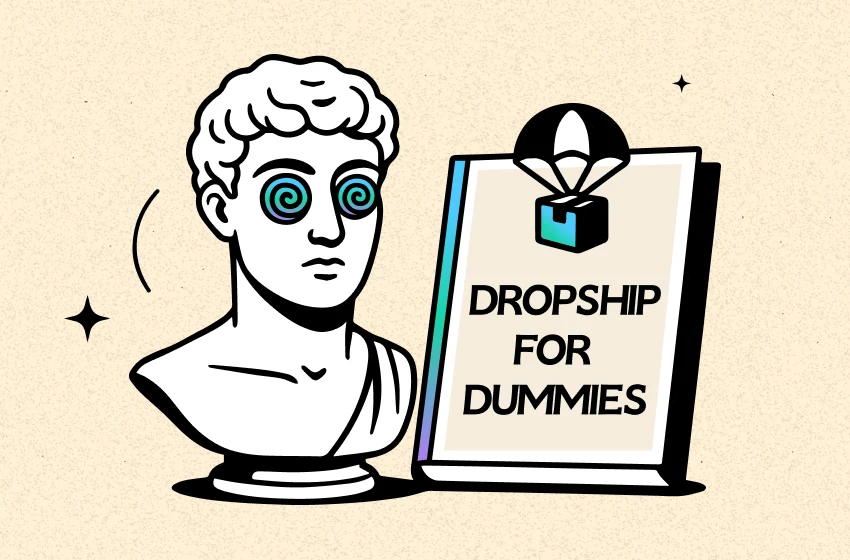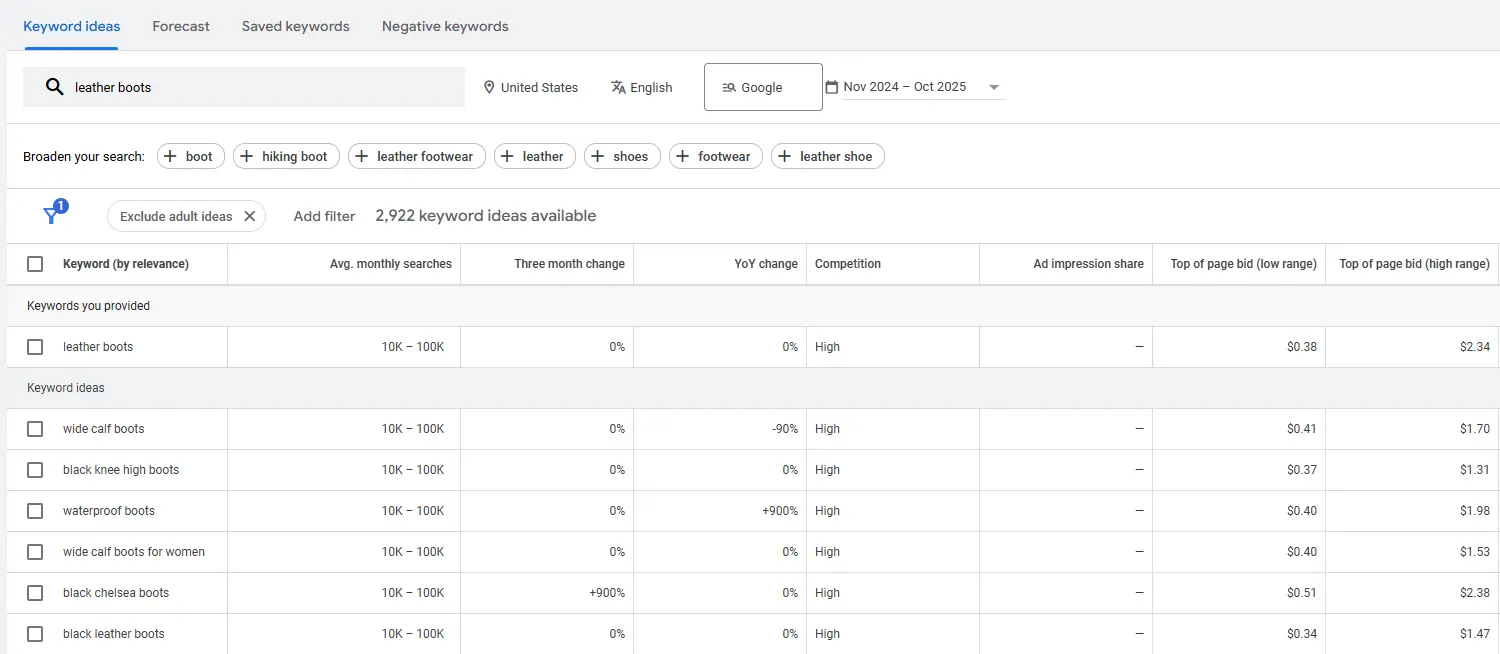Dropshipping for Dummies: Guide to Start Profitable in 2026

Dropshipping is one of the most accessible ways to start an online business. But while it’s easy to start, making it profitable requires mastering the essential steps and a few big considerations. This 2026 guide walks beginners through everything from picking products to scaling your store.
What is Dropshipping & How Does It Work?
Dropshipping is an e-commerce model where a retailer sells products online but doesn't keep them in stock. Instead, when a customer places an order, the retailer sends this purchase request to a third-party supplier who eventually ships the product directly to the customer.
Here’s how dropshipping model works:


Pros & Cons of Dropshipping
What are the Pros of Dropshipping?
1. No-Inventory Requirement
The biggest—and often the very first—reason merchants are drawn to dropshipping is its low-risk, no-inventory model. In dropshipping, merchants don’t keep any inventory, instead, when their customers make an order, they actually purchase the item from a supplier or manufacturer who then sends it straight to the customer.
Having no products upfront reduces financial risk, which typically occurs when merchants stock items that fail to sell.
2. Manage Stores from Anywhere
Another major advantage of dropshipping is the freedom to run your business from virtually anywhere. Since you don’t need to handle inventory, packing, or shipping, all you need is an internet connection to manage your store.
3. Easily Test Multiple Products
Dropshipping works perfectly for new merchants just starting their first online store on a limited budget, especially if they’re unsure which products or niches will be profitable. It allows you to sell multiple products across different niches in a single store, or even launch multiple single-product stores, making it easier to test market demand and scale the best-selling items over time.
What are the Cons of Dropshipping?
1. Intense Competition
Dropshipping attracts thousands of new sellers each year because it’s easy to start. This leads to heavy competition in almost every niche, with many stores selling the same products at similar prices. On top of that, dropshipping stores also compete with major retail brands and marketplaces like Amazon, which makes standing out even harder.
2. Dependence on Third-Parties
Unlike traditional retail, your dropshipping business relies heavily on third-party suppliers for inventory, order fulfillment, and shipping. Any mistakes on their end—such as delayed shipments, stock shortages, or incorrect orders—directly impact your customers and your store’s sales.
How to Start a Profitable Dropshipping Business in 2026?
A profitable dropshipping business is one that not only generates high sales but also consistently delivers profit over time.
Here are 6 steps to building a profitable dropshipping store from scratch:
Step 1. Select The Most Potential Niche for You
For beginners, we often recommend starting with a niche that rings the most to them. This could be a hobby they're already passionate about, a favorite item they personally love, or a solution to solve their own problems.
Picking something familiar makes starting dropshipping much easier, as you already have a sense of a potential winning product and your targeted customers.
Starting with a niche you genuinely love means you’re your own first customer — and that makes everything in dropshipping easier, because no one understands your needs better than you do.
As Harry Chu, Founder of TrueProfit, says:
That said, your personal favorites aren’t guaranteed to sell. To check if a niche is a good fit, evaluate it using three key criteria:
- High demand: There's a stable group of customers who are actively searching for and willing to pay for products.
- Healthy profit margin: Good gross profit margin falls between 50% and 70%. Anything below this margin range is too weak to build a profitable dropshipping after covering the cost of goods sold (COGS), shipping, and marketing.
- Moderate-to- low-competition: Having enough existing demand to prove there’s a markets, but not so many stores fighting for the same audience.
Step 2. Pick the Potential Winning Products
A good product typically has a profit margin of 30–60%, with anything above 60% considered high. It also has high demand with 10,000–100,000 monthly global searches. And just as picking a niche, starting with a product that has low to medium competition (especially since you’re a beginner). The market isn’t flooded, leaving room for your store to stand out and make sales.


A product that meets all three criteria is worth picking and testing in your store—but it doesn’t automatically guarantee profit.
A truly profitable product is one that consistently generates positive net profit, contributing to your store’s bottom line. This can only be measured accurately after 1–2 weeks of actual selling and consistent tracking of its performance.
For a deeper dive, check out our winning product checklist to quickly figure out if a product is even worth testing in 2026.
Step 3. Choose a Reliable Supplier
In dropshipping, choosing a supplier is just as important as picking the product, because they handle almost all of your store’s fulfillment and inventory. That’s why their performance can directly impact customer experience and financial aspects like cost of goods sold (COGS), selling price, return rates, and ultimately your overall profitability.
A supplier is considered good when they do well in four key areas:
One, they keep product costs low enough to leave net profit margin;
Two, they ship fast enough to protect conversion and customer lifetime value;
Three, they fulfill accurately that match with customer expectation;
and Four, they must directly integrate with your store to automate the fulfillment process.
Here are top 6 dropshipping suppliers we recommend:
- AliExpress – Best for China-based products
- Spocket – Best for US & EU-based products
- Zendrop – Best all-in-one dropshipping solutions
- DSers – Best for AliExpress dropshippers
- SaleHoo – Best for pre-vetted suppliers
- Printful – Best for print-on-demand store
Step 4. Choose The Right Selling Platform
When you’re just starting your first dropshipping eCommerce store, we always recommend trying Shopify first. It’s one of the most widely used platforms among new dropshippers thanks to its ease of use and quick setup. The Basic Plan costs $25 per month and includes all the essential features you need to run a simple yet well-functional dropshipping store.
On top of that, Shopify has a massive app ecosystem—over 8,000 apps integrate directly with the platform—so you can scale your store easily as your business grows, adding advanced features for marketing, shipping, analytics, and more.
While Shopify is our top recommendation, there're some alternatives to consider. The key is to choose something that fits your budget and aligns with your store’s specific needs.
- WooCommerce is best for full control; works with WordPress.
- BigCommerce with its vast built-in advanced features will be perfect for fast-growing stores.
- Wix eCommerce is best for drag-and-drop design, making stores quick to launch.
- Squarespace is commonly used by visually stunning stores.
- TikTok Shop is a rising platform for social commerce.
- Amazon is a marketplace, making it ideal for reaching mass audiences.
- eBay is best for tapping existing buyers.
Step 5. Set Up Your Online Store
With Shopify as a selling platform, the first step is usually creating an account, which comes with a free trial to explore the platform.
The next focus is choosing a theme that reflects your niche and brand, while customizing elements like your logo, colors, fonts, and homepage layout to give the store a cohesive look. Products can be added through Shopify’s editor or imported via dropshipping apps like Zopi, keeping everything organized and ready for customers.
Setting up payment gateways such as Stripe or PayPal and defining shipping zones helps ensure smooth transactions. Finally, checking the mobile experience offers confidence that the store functions well for shoppers on any device.
Step 6. Connect Automated Dropshipping App
Automated dropshipping app allows merchants to outsource inventory management, order fulfillment and other tasks to a third party. With most repetitive tasks now running automatically, merchants can focus on what's truly moving the growth needle such as testing products, testing ad strategies, optimizing costs, etc.
In our article specifically focused on automated dropshipping, we recommended these 7 automated solutions:
- AutoDS is best for all-in-one dropshipping solutions
- Spocket is ideal for US & EU-bassed product sourcing and order fulfillment
- Flair is known for its automated product content generation
- Pencil is perfect for producing studio-quality ad creatives
- Omnisend focuses on automated email & SMS marketing
- Tidio works as an automated 24/7 customer support agent
- TrueProfit is the top 1 net profit tracking & analytics solutions in Shopify
Different apps automate different parts of the dropshipping business, so it’s important to pick the ones that significantly impact your store's performance at that stage.
Is Dropshipping Profitable?
Dropshipping remains a potentially profitable business model in 2026. On average, stores see a conversion rate of around 1.4%, with gross profit margins typically ranging from 50% to 60%.
However, dropshipping success rate varies widely between stores. It’s estimated that about 10–20% of dropshipping businesses achieve profitability, meaning one in five stores consistently makes money.
Profitability in dropshipping, as with any business, comes down to two key factors: increasing net profit while keeping costs under control. Getting both right is essential to building a sustainable and profitable store.
What is the Average Income of Dropshipping as a Beginner?
In 2025, average dropshipping income varies widely depending on experience level.
Beginners typically earn between $0 and $5,000 per month and may often struggle to make their first sale, which could take up to 3-6 months.
Experienced dropshippers can generate $10,000 to $50,000 or more per month thanks to better cost management and proven strategies built up through their hands-on testing.
One of the most critical factors affecting dropshipping income is your average dropshipping profit margin. In most cases, dropshippers work with profit margins between 10% and 30% — but this can vary significantly depending on the type of product you sell.
How Much Does It Take to Start Dropshipping?
Realistically, most dropshipping sellers should be prepared with at least $5,000–$10,000, as much of this capital will cover key expenses such as advertising, product costs, shipping fees, eCommerce platform charges, apps and plugins, and handling returns and refunds.
Together, these costs demonstrate why dropshipping, despite its low-inventory image, still demands thousands of dollars in upfront capital to operate effectively.
Is Dropshipping Right for You?
In short, dropshipping is a highly accessible business model for almost anyone, but building a successful store still requires specific skills and some upfront capital. It works best for merchants looking for a low-risk way to test products, but it may not be ideal for those aiming to build a strong, recognizable brand right away.
The most effective approach is to start with dropshipping to validate products and niches, then transition to a private-label or white-label store, and gradually scale it into a full-fledged brand.
Lila Le is the Marketing Manager at TrueProfit, with a deep understanding of the Shopify ecosystem and a proven track record in dropshipping. She combines hands-on selling experience with marketing expertise to help Shopify merchants scale smarter—through clear positioning, profit-first strategies, and high-converting campaigns.





